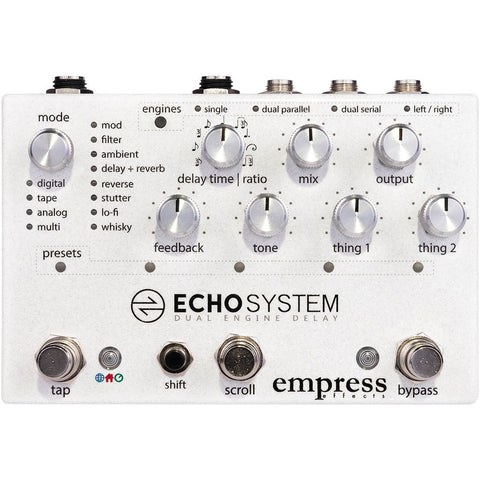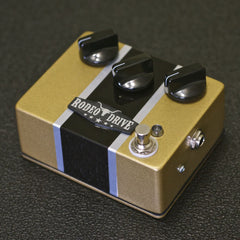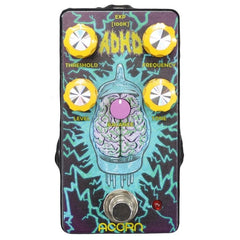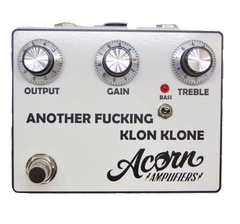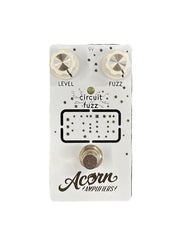Welcome To Steve's Music Center !
Empress Echosystem
Empress Effects
Sold out.
Empress Echosystem
Spanning the gambit of known delay possibilities and beyond, the Echosystem could be the ultimate delay-crafting tool. Faithful emulations of classics like digital, tape and analog delays are numerous, as well as Empress' own take on each of these delay styles. Moving beyond the traditional, the vast amount of sonic ground the Echosystem can cover becomes apparent. Check out the ambient modes when you're feeling chilled out, or perhaps a visit to the multi tap modes for a taste of inspiration.
The Dual Engine functionality allows any 2 of these delays to be used together, routed in either parallel, series, or left/right configurations.
In addition to delays, there's the super-useful reverb combos, which will elevate any guitar part. Oh, and don't forget Whisky mode, best accompanied by a dram of whatever you've got!
The Dual Engine functionality allows any 2 of these delays to be used together, routed in either parallel, series, or left/right configurations.
In addition to delays, there's the super-useful reverb combos, which will elevate any guitar part. Oh, and don't forget Whisky mode, best accompanied by a dram of whatever you've got!
Video
Features
- 36+ studio quality algorithms and counting - The pedal has 12 algorithm types, all with multiple variations. For example, there are 4 different tape delays on tap.
- Classic Sounds - Emulations of classic tape and analog units are available, as well as our take on these types of delay.
- Easy to use and fast to dial in - All the algorithm controls are sitting on a knob in front of you, no fiddling through laborious menus.
- Tap Functions - Global tap tempo as well as local tempo with lots of subdivisions are available on all modes, in addition to being able to set the delay time directly with the knob.
- Low Noise signal path - Features a signal to noise ratio of >104dB and maintains an analog dry path.
- Dual Delay Engines - 2 delays can be used at the same time, each with its own full set of controls and routed in serial, parallel or left/right.
- Up to 35 Presets - Settings can be saved to 35 presets. With three stomp switches, accessing the presets is easy.
- 2 Preset Modes - Bank style or scrolling style preset modes.
- True Bypass and Buffered Bypass - It can be configured to run with true bypass or buffered bypass if you want to hear trails.
- Cabinet Simulator - 3 variations to choose from, perfect for recording, practicing or for gigs without an amp.
- Output Transformer - Get hum-free operation when operating in stereo with two amps. Output 2 is isolated with a transformer to eliminate nasty ground loops.
- High Quality Audio - 48kHz sampling, with 24 bit conversion and 32 bit internal processing.
- Analog Dry Path - Dry signal is left untouched, and blended with the wet signal using VCA. (no zipper noise, hooray!)
- Unsurpassed Connectivity - The Universal Control Port allows you to connect an expression pedal, external tap switch, control voltage, external audio input and MIDI - all using a standard 1/4" jack!
- Advanced Configuration Menu - The Advanced configuration menu lets you configure how your delay works. Select from true or buffered bypass, 0-35 presets, MIDI configuration, Control Port(expression pedal, external tap, control voltage and MIDI) as well as which style of preset system to use, input signal pad, output transformer enable and more!
- Small Size - The enclosure measures approximately 5.7" by 3.75" by 1.75", which is delightfully small when considering all the features packed into this unit.
Soundclips
Specifications
| Input Impedance | 1MΩ |
| Output Impedance | 100Ω |
| Output Impedance (transformer) | 600Ω |
| Frequency Response (-3dB, dry) | 10Hz – 50kHz |
| Frequency Response (-3dB, wet) | 10Hz – 23.4kHz |
| Total Harmonic Distortion (dry) | 0.09% |
| Total Harmonic Distortion (wet) | 0.22% |
| Dynamic Range (dry) | 106.9 dBA |
| Dynamic Range (wet) | 105.5 dBA |
| Input Headroom (dry) | +10.0 dBu |
| Input Headroom (wet, no pad) | +0.5 dBu |
| Input Headroom (wet, 6dB pad) | +5.7 dBu |
| Input Headroom (wet, 12dB pad) | +10.8 dBu |
| Output Headroom | +16.2dBu |
| Power Input Connector | 2.1mm Barrel Connector |
| Power Input Voltage | 9V |
| Required Current | 300mA |
| Height (enclosure only) | 1.75” |
| Height (including controls) | 2.25” |
| Length | 5.7” |
| Width | 3.75” |
| Weight | 1.5lbs |
Customer Reviews
Based on 1 review
Write a review

 Pristine
Pristine Short Stuff 1980
Short Stuff 1980 Ping Pong
Ping Pong Dynamic Duck
Dynamic Duck Dynamic Feedback
Dynamic Feedback